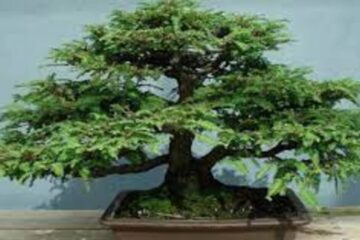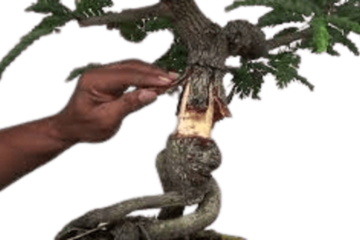Are you tired of seeing these bright orange plants sprouting up in your garden? Are you worried that they’ll take over and ruin your lawn? If so, don’t panic! You can get rid of mimosa weeds by following this step-by-step guide to removing them from your yard with minimal effort and no chemicals. Here’s how to get rid of mimosa weeds for good.
The first step is identifying the Mimosa weeds
Content Overview
Identifying the Mimosa weeds is the first step in getting rid of them. The weed, also known as Albizia julibrissin, is easy to identify with its multiple branches growing from a central base. This shrub can reach heights of more than 30 feet and has yellow flowers that attract bees, which serve as effective pollinators. Another identifying feature is the bipinnately compound leaves on each branch.
The second step is getting rid of them once you’ve identified them. While digging up weeds can seem like a simple solution, it won’t work with Mimosa because it will re-sprout from tubers at its base. To get rid of it, use herbicides as instructed by your local nursery or garden center professional. Follow directions on all products carefully and be sure to use the protective gear including eye protection, rubber gloves, and a mask.
Mimosa weeds can be identified by their yellow flowers and long, yellow/green seed pods. Another characteristic is their leaves which are bipinnately compound with a feathery appearance. They grow fast so be sure to act quickly! This weed is more aggressive than other invasive species, but it’s easy to get rid of if you follow a simple plan.
The second step is cutting down the mimosa weeds
The easiest way to rid yourself of mimosa weeds is by cutting them down at the base. First, clear your yard as much as possible, making sure not to leave any spiny leaf clippings or flower heads that can spread their seeds further. Grab a long-handled lopper and trim the plants at the base. You’ll know you’ve clipped down to the root if you don’t feel resistance when pulling back on the lopper.
Cutting down mimosa weeds is only half the battle. To really make a difference, you have to remove all their stumps and root pieces so they can’t grow back again. You can do that by either digging them out with a shovel or pulling them out with pruning shears. Once your yard is clear, mix in some compost or another type of fertilizer to help support new growth.
Remember, mimosa weeds are notorious for popping up in your yard again. To really be rid of them, you’ll need to follow up on your first cut by mowing your grass regularly. If you want to be extra safe, fertilize your lawn and add some low-growing plants like lamb’s ear or wildflowers that mimosas don’t like so they can take root and prevent future weeds from growing.
The third step is using a combination of herbicides and hand pulling
The best way to get rid of mimosa weeds is using a combination of herbicides and hand pulling. Research local laws before using any herbicide on your property and always wear safety equipment and protective clothing when handling potentially dangerous chemicals. The type of herbicide used will depend on where you live and what is safe for that location. Check with your local nurseries or extension service office before starting any chemical controls.
Using a combination of herbicides and hand pulling will allow you to quickly get rid of all weeds in your area, but it is time-consuming. Depending on your garden size, you may have several mimosa trees to contend with. The first step is to cut off any existing flowers or seed pods. The second step is cutting down branches about 1 inch above ground level.
Once you have removed all visible growth, apply herbicide to all areas where plants used to grow. Read and follow directions carefully when applying any herbicide as some chemicals require several days before they will take effect.
Covering or tarping over your garden after application can prevent unwanted spray from reaching other areas if you are unsure about how much time is needed before re-entry. After chemical application, it is time to start pulling and digging out weeds that are still growing.
The last and most important thing to do if you want to get rid of mimosa weeds
The only way to get rid of mimosa weeds is to dig them out by hand. It will take a long time, but it’s worth it to have clear, beautiful grass. If you have a large area of mimosa weeds to deal with, enlist some help from friends and family members who don’t mind getting their hands dirty (you may want to offer them a nice cold drink after)!
There are no known effective ways to get rid of mimosa weeds naturally; most herbicides can’t effectively target mimosa weed root systems. Some companies advertise mimosa weed killers and herbicides, but these products are primarily focused on killing grass in your yard so you can plant new kinds (and will likely damage existing plants, including trees).
If you want a smooth, green lawn, call around several landscaping companies. Ask how much they charge per yard and compare prices before making a decision.
There are many reasons you might want to remove a mimosa weed from your yard, but it can be extremely difficult. The only way that’s guaranteed to work is by getting rid of it yourself, which requires time and persistence. Once you get rid of mimosa weeds in your lawn, maintain healthy grass by watering consistently (about once every three days) and fertilizing every other week.
Why would you want to get rid of mimosa weeds? They can be an incredibly beautiful plant, but they’re also incredibly invasive. They need a very specific type of soil and climate in order to grow well, and once they take root, it can be extremely difficult to get rid of them. Luckily, there are many options available for getting rid of mimosa weeds; all you have to do is choose which one works best for your situation!
Mimosa tree bark
Although tree removal is considered a permanent solution, mimosa bark provides a good long-term way to keep them at bay. To use it, simply fill a bucket with mimosa tree bark (you can also find it in bags), then sprinkle half on the area you wish to treat and cover with water; let sit overnight.
In general, it will take about four applications (once every three months) over two years before your mimosa weeds are eradicated. Another tip is a natural herbicide that you can use on your property – mimosa bark. The bark of the mimosa prevents mimosas from rooting in the ground and also prevents existing ones from spreading.
Plus, it’s much safer than other herbicides you could use.
To use mimosa bark as an herbicide, you will need two things: bark from a healthy mimosa and hot water.
After gathering mimosa tree bark, boil it in water (you can also microwave it) until you have about a gallon. Pour half on one side of your yard and cover with water. The other half should be set aside and used later.
This will create a barrier against future mimosas so they don’t take root or spread further into your yard.
Read More :Mimosa tree Facts and Problems
Frequently Answers the Questions (FAQ)
When do mimosa trees leaf out?
Mimosa trees leaf out in April or May. This time depends on your region, as spring weather varies from region to region. Check with a nearby nursery for mimosa tree leafing dates. There’s no surefire way to predict exactly when a mimosa tree will leaf out, so you may need to check daily if you are looking forward to signs of leaves.
When do mimosas bloom?
The mimosa tree is known as an invasive species in most parts of North America and Europe, but can be a beautiful addition to landscapes in places like Brazil and Australia. You’ll have these weedy trees growing up through your lawn unless you take action, so when do mimosa trees bloom?
In their native regions, mimosas generally bloom from January to March. As with most plants in temperate climates, their blooming time is tied directly to environmental conditions. The flower buds on a mimosa tree are susceptible to frost damage until they open, and when you see those pretty pink flowers it’s a sign that things have warmed up enough for them to emerge unscathed.
How long do mimosa trees live?
It’s hard to say how long a mimosa tree will live, but they have been known to live up to 300 years. That’s because they are incredibly hardy and can adapt to almost any growing environment.
Generally,a mimosa tree’s average life expectancy is about 15 or 20 years, but some have been known to live up to 300 years. This means that if you are unhappy with your mimosa and want to remove it, you may have some time before it needs to be removed. But do not be fooled by its long duration: the mimosas quickly push trees which can become quite large in a short time.
How fast do mimosa trees grow?
In terms of growth, mimosa trees are highly competitive. Their growth rate can exceed three feet per year, making them one of the fastest-growing plants. But these should be planted only in areas with high levels of sunlight and little competition from other plants.
Because they can grow so quickly, planting them correctly is imperative when starting a garden or mimosa planting. There are many types of trees that can be used for fast-growing ornamental purposes.
However, mimosa trees offer something extra – those magnificent fluffy flowers! While their growth rate is rather impressive, it’s their springtime display that many people find so alluring.
These trees will get up to 25 feet in height and can spread out as wide as 45 feet or more.
How to keep a mimosa tree small?
Keeping a mimosa tree small is an important consideration to make. These trees can get very large and they tend to grow into areas where they are not welcome. Many people plant mimosas as ornamental additions to their yard, but then end up pulling them out due to the size. To limit the size of your tree, prune it once per year during the early spring or late winter before new growth appears. You will also need to prune it to further limit the tree’s size.
Conclusion
The mimosa tree has it’s problems and its weeds, but overall it is a beautiful and amazing tree. In fact, I think mimosa trees are one of my favorites! They just have so much character! I hope you learned some useful information today on how to get rid of mimosa weeds. But don’t take my word for it; check out other reputable sources online and even at your local library.



